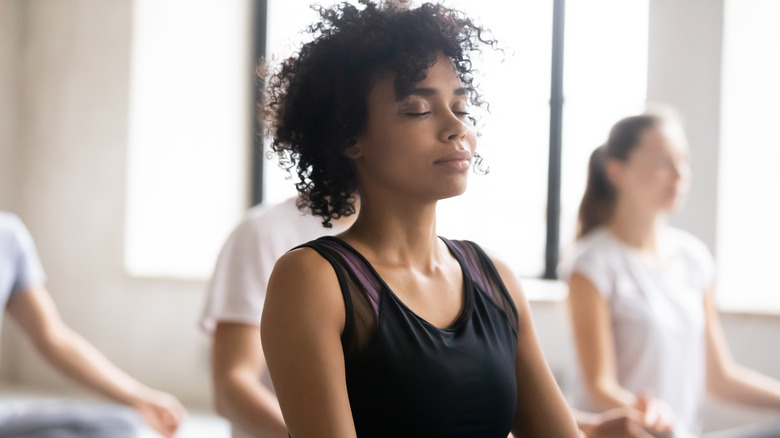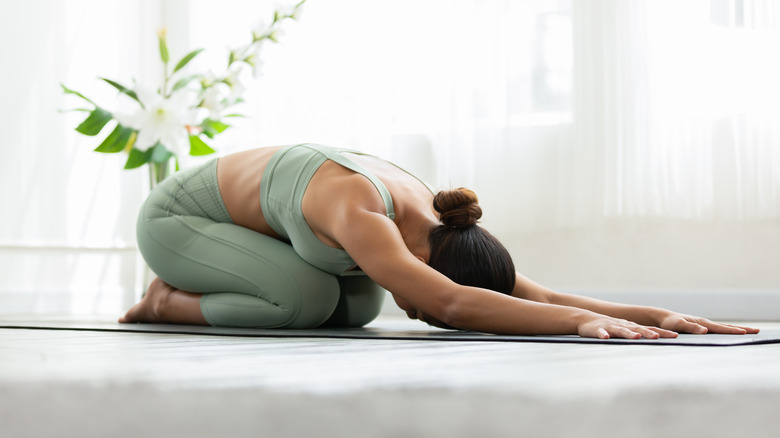Present Your Best Self With These Posture-Improving Tips
Depending on which generation you were born in, you may or may not have had adults commenting on your posture as you grew. For Gen Xers and Millennials, it seemed we never had the posture the adults expected us to. We were either told to stop slouching, to pull our shoulders back, or to stand up straight. Although it might have felt annoying to hear these reminders in our younger years, having good posture is a goal that many of us desire as adults, although it may feel unattainable as we age.
Our lifestyles do not always allow for us to have good posture, so many of us need to be purposeful about attaining it. We sit hunched over at our computers at work, we wear shoes that aren't as supportive as they should be, and our necks are curved as we look at our phones for hours at a time. Good posture projects confidence, openness, and health, and is a goal for many people. The good news is that attaining good posture is easier than previously thought.
Defining good posture
Good posture is about how you hold yourself when you are sitting or standing, and isn't necessarily the same for everyone, as it varies based on body type, shape, and height. Medline Plus explains good posture as maintaining the curves of your body. Your neck, lower back, and spine have places where they naturally curve. Good posture is honoring those parts of your body, and holding yourself in a natural way. Although standing up straight is the goal of most people, there is more to correct posture than straining your shoulders and back stiffly.
Lindsay Newitter, AmSAT-Certified Alexander Technique Instructor (a method that is used to help change poor posture), told Shape, "Good posture is having a full range of motion in joints and being able to easily find a place that's centered and neutral." Standing ramrod straight is uncomfortable and may potentially cause unnecessary tension within the body. Instead, you should aim to sit comfortably with your shoulders level and without a slouch.
Overall posture work
If you want to improve your overall posture, just becoming aware of how you are holding yourself when you take part in activities throughout the day is a good step. How do you hold yourself when you are completing chores, watching TV, or exercising? Being mindful of how you position your body during various activities is important to your overall posture in other areas of your life. To help you find that neutral place of comfort, make sure to exercise daily with core workouts and stretching poses, per Medline Plus. In addition, it is helpful to maintain a healthy weight. Carrying extra weight may put more stress on your back making good posture quite difficult.
Finally, consider what you wear on your feet all day. It's fine to rock those gorgeous heels every once in a while, but consider opting for flatter shoes with supportive cushioning for balance and comfort. Wearing high heels or flip-flops too often can keep you off balance and negatively affect your spine.
Tips when sitting
Unfortunately for many of us, a large part of our day is sitting at a computer desk or hunching over our devices. This can really take a toll on your posture. In order to improve your posture while you are sitting, consider how you hold yourself. The slouching and slumping that comes from poor posture while sitting can make you feel fatigued and give you headaches. In order to rectify this problem while sitting, try to sit with your knees and your elbows at 90-degree angles, per Shape. As for your chair, aim to sit with your rear end touching the back of the chair for support.
In addition to how you sit, consider what the most comfortable height would be for your computer monitor. When you are looking at the monitor, make sure it is at eye level, and that your feet and shoulders are square to it. Since we spend a large part of our day sitting, paying attention to how your work center is set up is key to achieving proper posture.
Attain good posture while standing
To work on your posture while you are standing, focus on balance by positioning your feet shoulder-width apart. Be sure to stand evenly on your feet with your shoulders level. Shape recommends that you roll your shoulder blades gently back and down while letting your arms hang gently at your sides. Pretend that there is a string attached to the crown of your head and that it is gently being pulled up, so as to help you remember to keep your chin parallel to the floor and not collapse through your spine.
This may sound like a lot of details to remember while standing, but the more you practice it, the more natural it will become. So much of standing tall has to do with feeling comfortable and balanced in our bodies. By becoming aware of where you naturally hold your shoulders, feet, and chin, you are bringing awareness to the muscular and structural parts of your body that are in charge of your posture.
Exercises to improve posture
In order to maintain the structural strength necessary for good posture, it's important to exercise. As previously mentioned, focusing on core work is essential for achieving and maintaining good posture. Folding yoga poses like child's pose and forward folds are wonderful to help you stretch your back and keep it flexible. In addition, side planks and high planks target and strengthen deep core muscles so that holding your shoulders square and your trunk upright won't be difficult. Doing cat-cow poses while kneeling or standing works to strengthen the lower back. Finally, don't underestimate the importance of your glutes for good posture. Give them some love by practicing glute squeezes or glute bridges.
These exercises are great if you are looking to improve your posture because they target the areas that need attention in order to build strength and release tension. By strengthening, stretching, and lengthening the muscles in your abs, back, and lower body, great posture will be accessible to you so that you can show up in your life more confidently than ever before.





